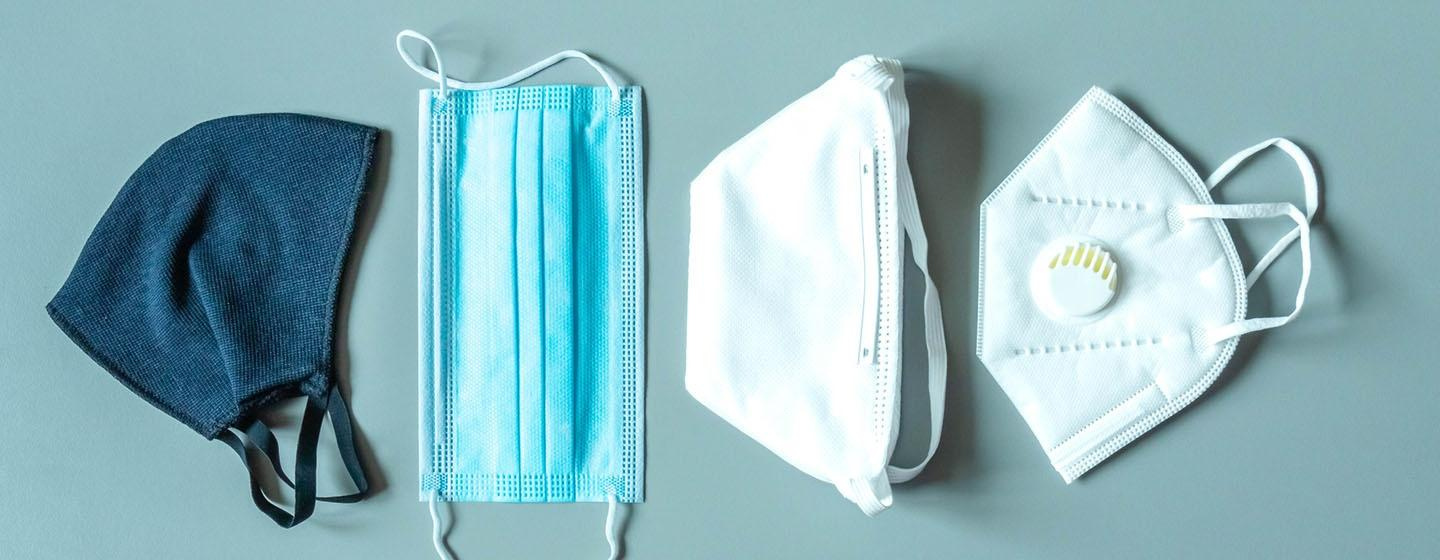Duke Study Raises Questions About The Most Effective Mask Type For COVID-19 Spread Prevention


Public health experts have spent months advising all of us that wearing a mask is one of the most effective tools to stop the spread of the coronavirus that causes COVID-19.
That’s because research shows the virus is primarily spread through airborne particles that are released when we talk, sing, cough and sneeze. Many states are now requiring masks to be worn in public.
Dr. Eric Westman, an associate professor at Duke University medical school, asked that question as he was helping a Durham nonprofit organization provide free masks to people.
To make sure the group bought masks that really offered protection, Westman asked the Duke physics department if it could devise a mask test. The results were published in the journal Science Advances.
Researchers tested 14 donated mask options. Here's a video of the study setup, produced by Duke University:
In this study, the fewest droplets (almost zero) were detected with a fitted N95 mask like the ones used by healthcare workers in the highest-risk settings. A surgical mask was a close second.
Masks made of polypropylene sandwiched in between layers of cotton were the third best.
The next six varieties of cotton masks all performed about the same, including double layered and single layered home-made cotton masks. The number of particles spotted depended on how loud the person was speaking and how closely the mask fit around the nose and mouth.
Less effective was the bandana, which let through about 50% as many particles as someone not wearing a mask at all.
But the worst performer was the gaiter, which people wear around their necks and pull up over their faces like a mask. In fact, the gaiter tested by the Duke team appeared to make things worse. Rather than preventing the droplets from escaping, it looked like it turned the larger droplets into a cloud of smaller ones that hung in the air longer. Researchers point out the material, which was made of polyester mixed with spandex, was already thin and pulling it over the face made it even thinner by stretching it out.
Westman adds the study also highlights that a person doesn’t need to cough or sneeze to spread COVID-19.
“If you didn’t know that speaking can spread particles that can spread virus, you need to know that,” he said. “That was confirmed over and over and over in the hundreds of trials that we did.”
Martin Fischer, who directs the Advanced Light Imaging and Spectroscopy facility at Duke devised the test. He said it was never meant to be a comprehensive test of all masks and mask materials. The goal of the study was to develop a simple, inexpensive technique for mask testing that could be replicated.
“Our intent was for this technology to get out there so companies and organizations can test their own masks,” Dr. Fischer said in an interview with the New York Times. “A mask doesn’t have to be perfect for it to work.”
The results of the study have been spread widely via news and social media under headlines like “Gaiters may be worse for coronavirus safety than no mask at all”, prompting other experts to speak out about what the test actually proves, and conduct research of their own.
Dr. Linsey Marr, a professor of civil and environmental engineering at Virginia Tech, worked with graduate student Jin Pan to test two types of neck gaiters. They found that both masks blocked 100 percent of large, 20-micron droplets and blocked 50 percent or more of one-micron aerosols. The gaiters only blocked between 10 and 20 percent of the smallest 0.5 micron particles but when doubled, the single-layer gaiter blocked more than 90 percent of all particles measured.
Continued testing is illustrating that the level of protection from COVID-19 that cloth masks provide varies based on construction and fit. Overall, tests are showing that more than one layer of fabric and a mask that fits closely to a person’s face with no gaps is most effective.
There is some concern about the widespread dissemination of the results of the Duke study discouraging people who are using neck gaiters as masks from wearing any face coverings at all.
“We should be encouraging people to use the most effective masks that are practical for community settings, but in general, any face covering is probably better than none,” Julia Marcus, an epidemiologist at Harvard Medical School, told the New York Times. “The more that people see face coverings out in the world, regardless of what kind, the more that social norms will shift in favor of masking.”